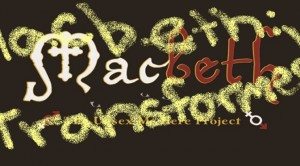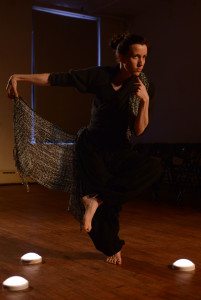
 Whenever there’s a non-traditional production of the Bard’s work, it’s hard to not comment on how universal the plays are, how the themes and stories are easily transportable to any space and time. When taking on Shakespeare’s text, anything goes. Race-blind, gender-blind, or age-blind, Shakespeare’s plays have tickled the imaginations of artists all around the world.
Whenever there’s a non-traditional production of the Bard’s work, it’s hard to not comment on how universal the plays are, how the themes and stories are easily transportable to any space and time. When taking on Shakespeare’s text, anything goes. Race-blind, gender-blind, or age-blind, Shakespeare’s plays have tickled the imaginations of artists all around the world.
For all the schools of thought on the correct way to approach and perform Shakespeare, what makes the texts so adaptable are the infinite possibilities within the language. Once a point of view is chosen and a clear choice (no matter how traditional or radical) is made, the text expands and contracts as per the specific point of view. Therefore, when attending a performance of a Shakespearean play, it is best to do so without any pre-conceived notions.
So when I realized that the play I sat down for was not Macbeth: The Unsex Me Project, a gender-bending performance of Macbeth where the audience would choose the genders of main characters, but Macbeth: Transformed, featuring two female actors (Amanda Boekelheide and Sarah Eismann) along with two unnamed actors (no program was handed out) on book reciting lines from the side, I reminded myself to trust Shakespeare productions’ penchant for surprising me. (The original plans for the production by Manhattan Shakespeare Project were changed at the last minute due to unforeseen events.)
Conceived by the two performers, there are strong choices on display over the course of two hours. The audience sits on the stage in the multi-functional Gallery space at Access Theater and the house lights seldom go down. As the actors on book read lines from other characters, members of the audience hold character names up, engaging directly with the two actors on stage. There’s abstract movement designed by Michael Mullen during the witches’ scenes, the famed dagger soliloquy, and the fight sequences. The bare set boasts only of few battery operated lights and one pink flower that appears with Lady Macbeth.
 While Amanda Boekelheide committed to telling story via movement and Sarah Eismann moved between Macbeth and Lady Macbeth with confidence, the production lacked a distinct point of view, a throughline that tied the exploratory elements together. For instance, when lights flickered as the house lights stayed on, I thought it was an accident. While Eismann performed the unsex me soliloquy, she only held the pink flower in the “damned spot” scene, as the verse was spoken by a man without much intention and movement – another choice that felt inconsistent. It became difficult to distinguish when what was unfolding on stage was accidental and when purposeful.
While Amanda Boekelheide committed to telling story via movement and Sarah Eismann moved between Macbeth and Lady Macbeth with confidence, the production lacked a distinct point of view, a throughline that tied the exploratory elements together. For instance, when lights flickered as the house lights stayed on, I thought it was an accident. While Eismann performed the unsex me soliloquy, she only held the pink flower in the “damned spot” scene, as the verse was spoken by a man without much intention and movement – another choice that felt inconsistent. It became difficult to distinguish when what was unfolding on stage was accidental and when purposeful.
One must take into consideration that the concept of the production had to be changed at short notice, and artists that continue to take risks with Shakespeare’s works deserve applause. But when many stagecraft elements are added to the language without a specific point of view, they can all end up, as Macbeth said “signifying nothing.”